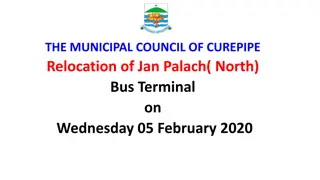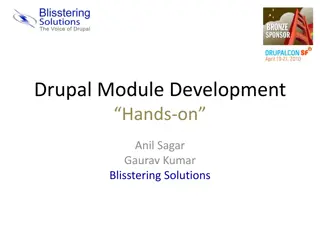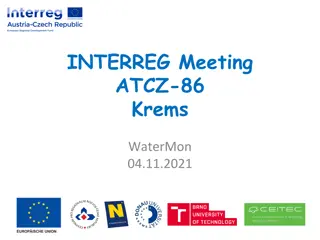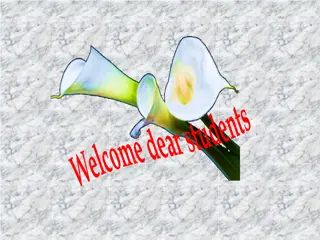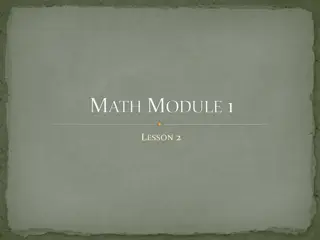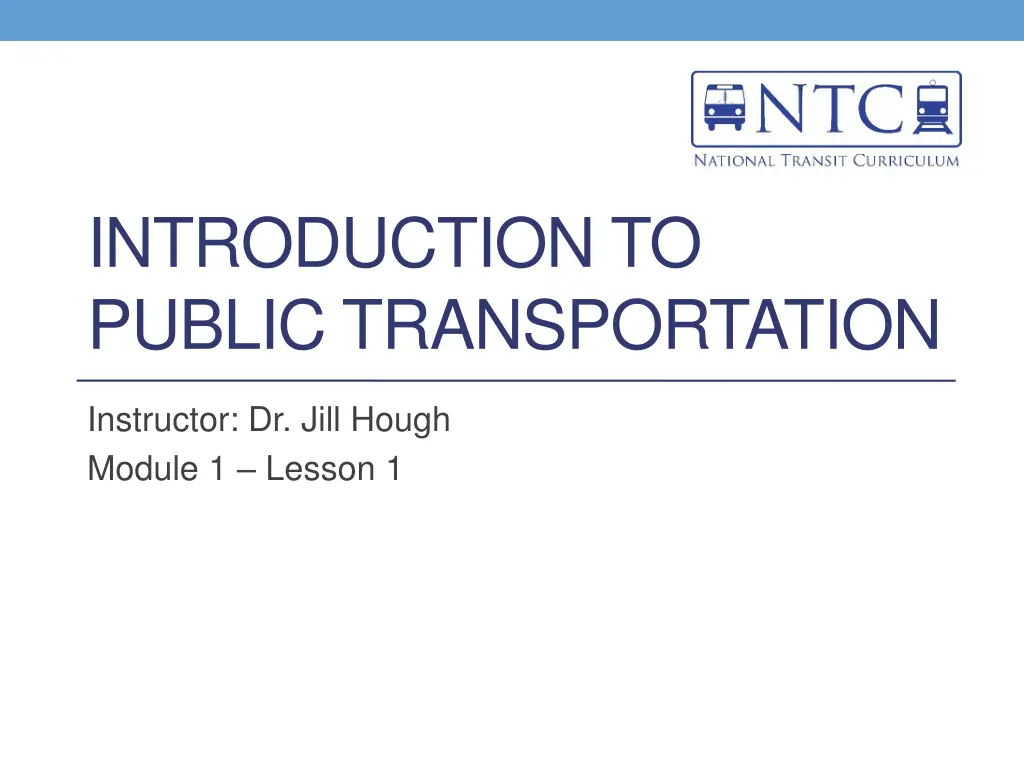
Exploring Public Transportation: Components and Options
Discover the world of public transportation through this insightful module covering the components, history, and business aspects. Learn about transit modes, such as buses, commuter rail, and more, and explore the importance of public transportation in communities. Dive into the learning objectives and gain a broader understanding of the role public transportation plays in society.
Download Presentation

Please find below an Image/Link to download the presentation.
The content on the website is provided AS IS for your information and personal use only. It may not be sold, licensed, or shared on other websites without obtaining consent from the author. If you encounter any issues during the download, it is possible that the publisher has removed the file from their server.
You are allowed to download the files provided on this website for personal or commercial use, subject to the condition that they are used lawfully. All files are the property of their respective owners.
The content on the website is provided AS IS for your information and personal use only. It may not be sold, licensed, or shared on other websites without obtaining consent from the author.
E N D
Presentation Transcript
INTRODUCTION TO PUBLIC TRANSPORTATION Instructor: Dr. Jill Hough Module 1 Lesson 1
INTRODUCTION TO PUBLIC TRANSPORTATION Module 1, Lesson 1
Module 1: Introduction to Public Transportation Lesson 1: What is Public Transportation? Lesson 2: The History of Public Transportation Lesson 3: The Business of Public Transportation
Learning Objectives Describe the components of public transportation Identify the transit options available in your community Illustrate ways communities view public transportation Recognize that there is no universal structure for transit
Overall Context Public transportation, and its many components and options, is at the center of a community s ability to function, not just in recent time, but across decades.
What is Public Transportation? In 2011 there were 7,100 public transportation service systems that provided transportation rides in the U.S., by various modes. Of those, 825 were operating in Urbanized Areas and 1,440 were in Rural. There were 10.7 billion public transit trips taken in 2013 Passengers traveled 54 billion miles; average trip length was 5.4 miles. Source: American Public Transportation Association. Public Transportation Fact Book 2013 and www.apta.com
Transit Modes Bus (including bus rapid transit and commuter bus) Demand Response Commuter Rail Heavy Rail Light Rail (including streetcar and hybrid rail) High Speed Rail Ferryboat
Bus The most common form of mass transit service provided throughout the United States Buses operate on fixed routes and schedules over existing roadways Buses must be in compliance with mass transit rules including Americans with Disabilities Act (ADA) provisions
Demand Response Paratransit Service (passenger cars, vans or small buses) provided upon request to pick up and transport passengers to and from their destinations 9 Typically, a vehicle may be dispatched to pick up several passengers at different pick-up points before taking them to their respective destinations and may be interrupted en route to these destinations to pick up other passengers
Bus Rapid Transit Is an innovative, high capacity, lower cost public transit solution that can significantly improve urban mobility, according to NBRT. Number of BRT sites are increasing. National Bus Rapid Transit Institute is located at the University of South Florida.
Commuter Rail Local (short-distance) travel operating between a central city and adjacent suburbs Service is provided on regular schedules, moving commuters within urbanized areas or between urbanized areas and outlying areas Multi-trip tickets and specific station- to-station fares characterize commuter rail service, with one or two stations in the central business district
Heavy Rail Heavy rail service is characterized by high-speed and rapid acceleration passenger rail cars operating singly or in multi-car trains on fixed electric rails, with separate rights-of-way from which all other traffic is excluded Has sophisticated signaling, high platform loading and a heavy passenger volume
Light Rail An electric railway that operates local service in mixed traffic with road vehicles, or has grade crossings with roadways Characterized by short trains of one to four cars and by relatively short distances between stops for local service within a city and the immediate suburbs
High Speed Rail The U.S. government considers high-speed rail service to be rail service of 110 miles per hour (180 km/h) or higher The only operational high-speed train in the U.S. would be Amtrak s Acela Express A federal allocation of $8 billion for high-speed rail projects was part of the 2009 stimulus package The first dedicated high-speed rail in the U.S. will likely be in California
Ferries Vessels carrying passengers, and in some cases vehicles, over a body of water They are generally steam or diesel-powered
Other 16









